Upon selecting a new board of directors, they will hold a meeting to discuss the company’s way forward. During such meetings, various decisions and resolutions will be made in the interest of the company.
A board resolution, also known as corporate resolution, refers to a formal document where important business decisions made by directors are written.
These resolutions are often recorded in the template and treated with lots of legalities. Hence, both the senior management and staff are expected to take full compliance with the board’s decision.
Download Templates
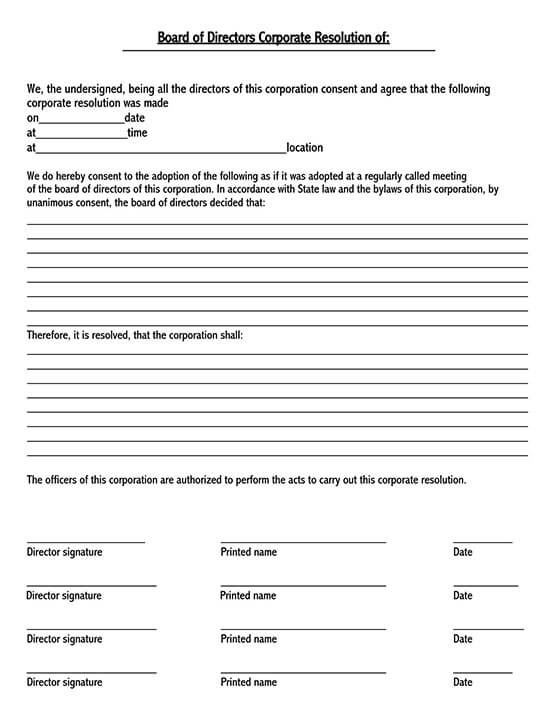
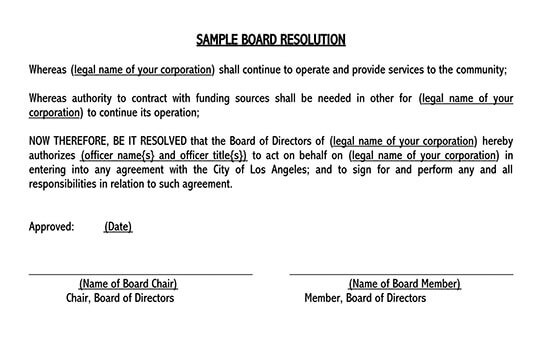
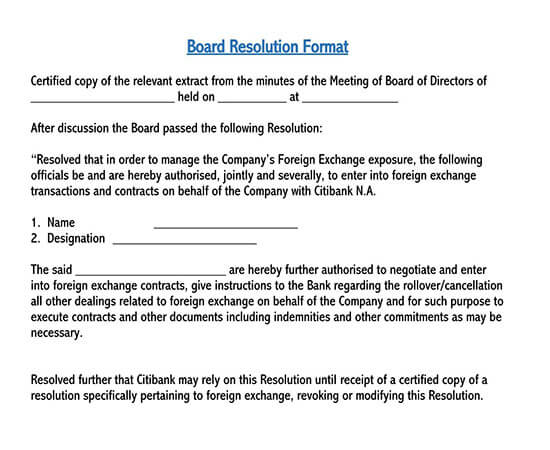
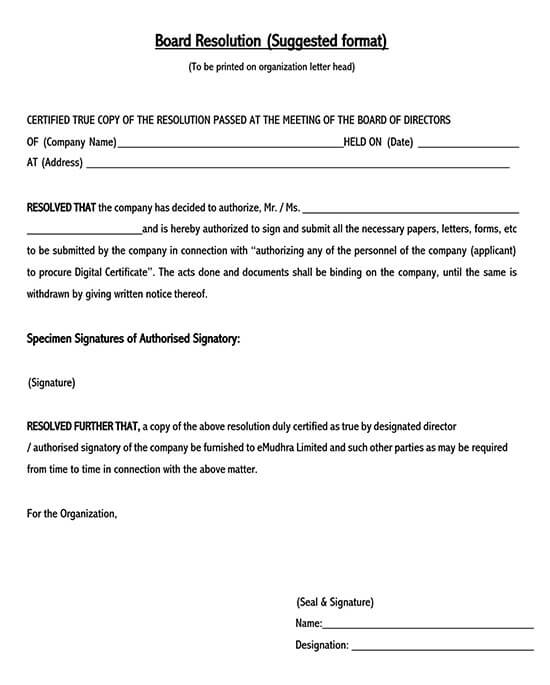
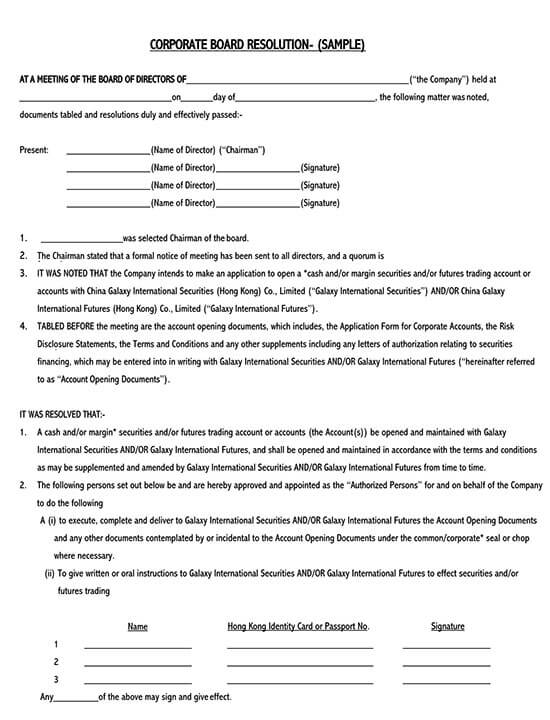
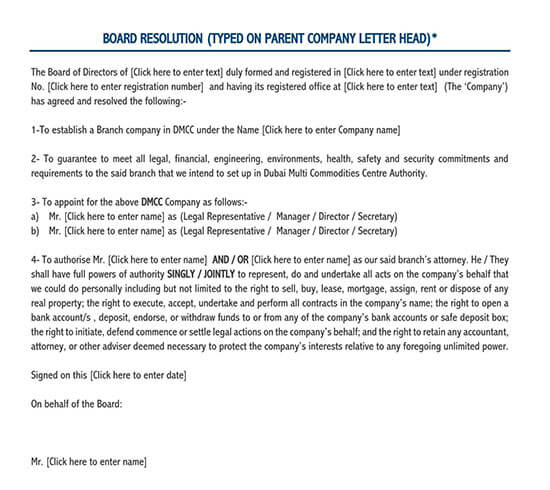
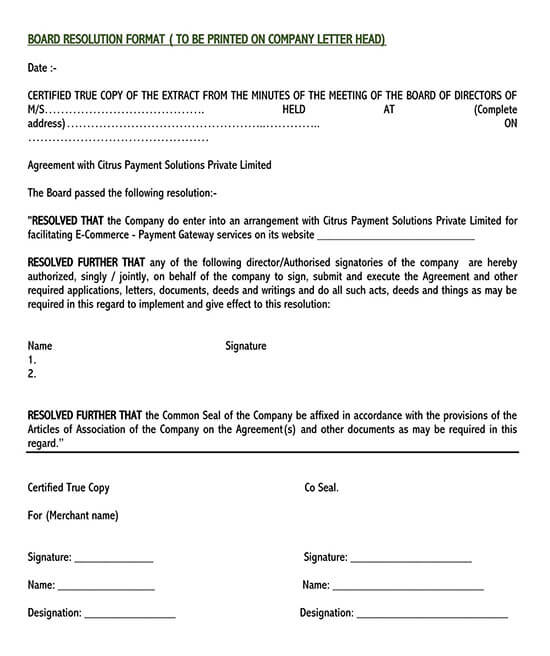
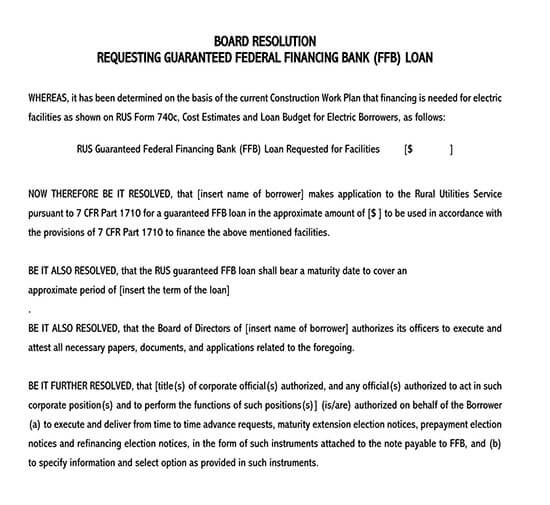
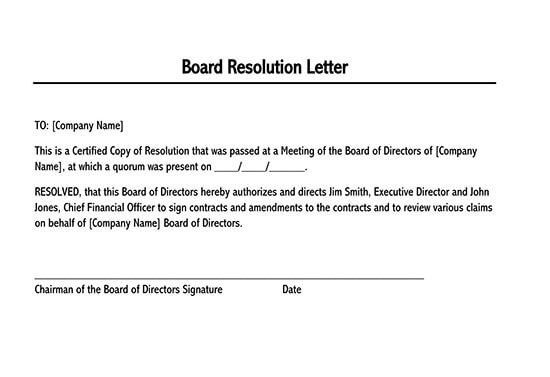
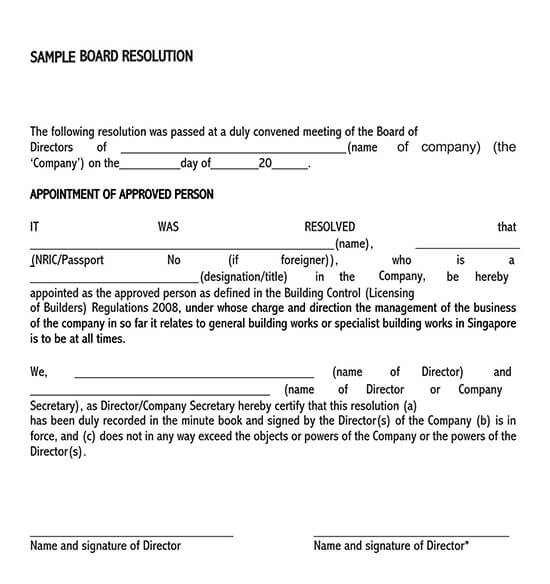
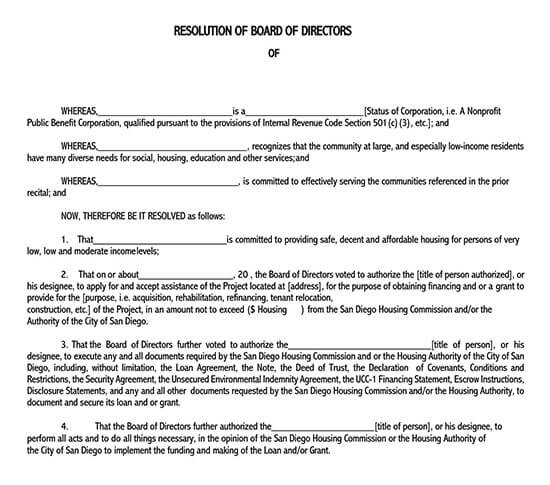
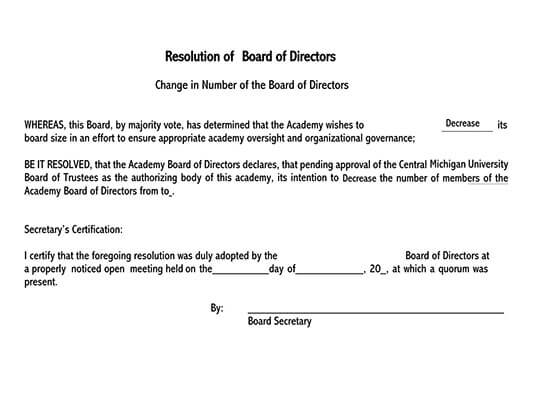
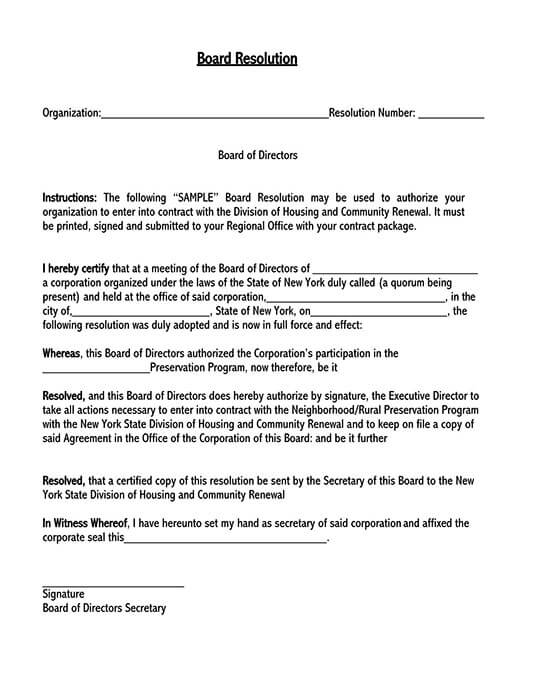
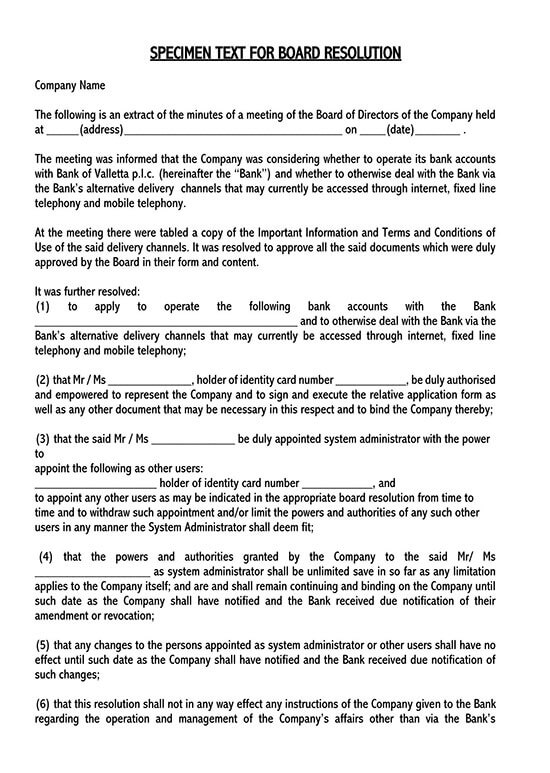
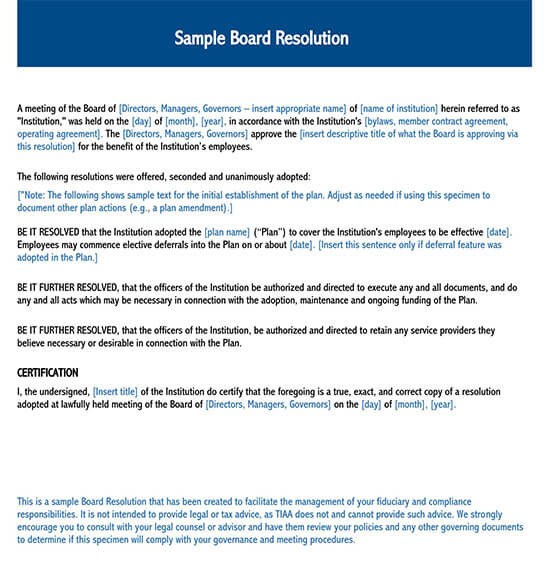
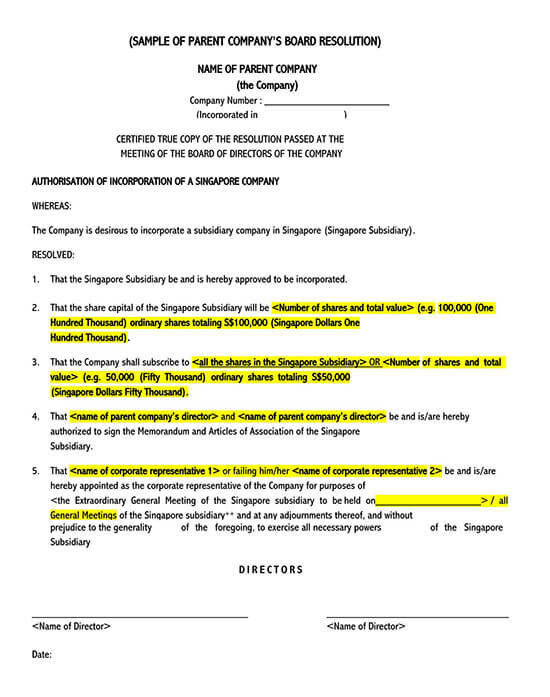
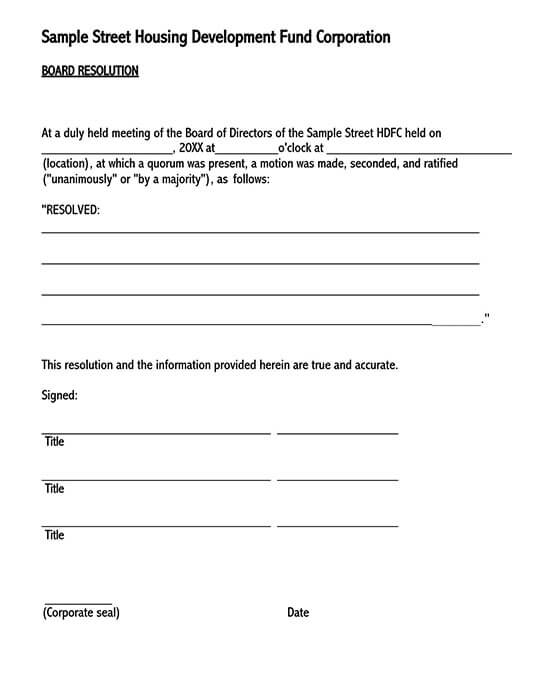
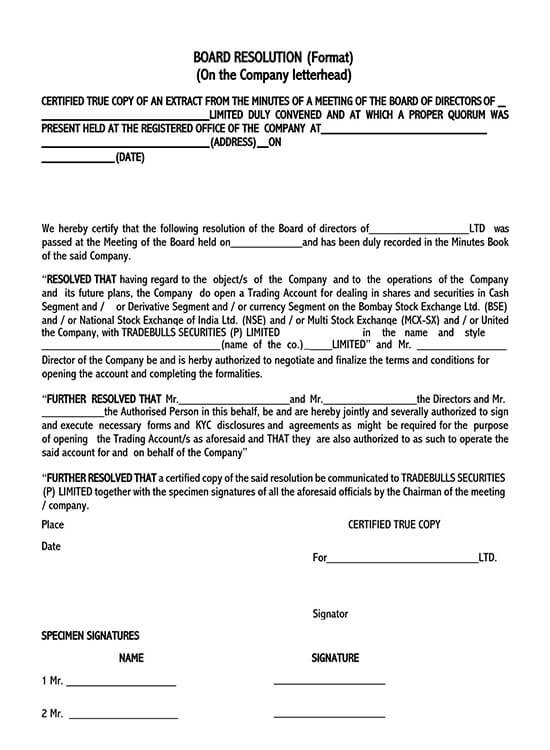
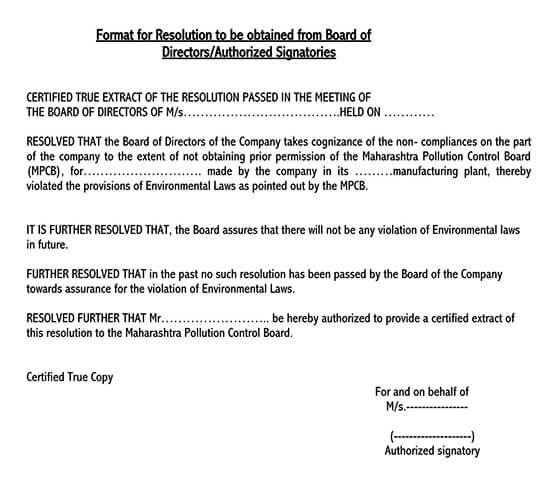
Board Resolutions vs. Board Minutes
It is easier to confuse board resolutions and board minutes. While they are closely related, the two do have some slight differences. The major difference is that the resolution is a legal action or resolution taken by the board of directors whenever a board meeting is held. Board minutes, on the other hand, refer to a written account of events or proceedings that took place during the said meeting. Note that minutes encompass everything from the start of the meeting to the end. This includes the discussions, proposals, and rejections, among other events.
Also, to make board minutes effective, the following information should be written down:
- Name and the location of the company
- The name of members absent
- Authorized proxies
- Name of chairperson
- Objections, queries, or concerns
- Amendments or corrections made from the last meeting
- The time, date, and location where the meeting is held
- The name of people attending the meeting
- Additions to current meeting agenda
- Items on the agenda that is postponed for future
- Whether quorum was reached or not
- Items on the main agenda
- Proposed resolutions
- Outcomes of proposed resolutions
- Name of all directors supporting and opposing the motion
- Actions required to implement the resolution
- Note of any fillings that must be made at company’s house and names of people responsible
- Any other matter discussed
- Agreed date for the next meeting
- Time members adjourned
Things to Know About Board Resolutions
Since they are legal documents, the resolutions should be treated just like any other important document in the company. It is therefore recommended that they be stored in places other important documents are kept, such as meeting minutes. Also, the company should keep a soft copy to back up the resolutions. Depending on the company’s choice, a copy can be stored on google drive, computers, or hard discs.
Entities requiring board resolutions
As a company, you will always engage in business transactions that require proof of commitment. These transactions include intellectual property, land transactions, financial assets, to mention a few.
Depending on the nature of the transaction, the following institutions may request you to produce a board of resolution document:
- Bank institutions
- Brokerage firms
- Title agencies and
- Asset managers
- Real estate vendors
Creating a Professional Board Resolution
Creating a professional resolution can be a walk in the park. Since they are official documents, there are certain factors you need to put into consideration.
If you are thinking of where to start writing, here is a guideline that will help you through:
Know the format
The format of writing plays a critical role in the overall presentation of your resolution document. As a golden tip, always start by writing the date and resolution number at the top.
EXAMPLE
If it’s the first board meeting you are holding, you can simply write 001 below the date.
Draft a title
The title should be able to communicate the message your resolution is all about. Make sure you keep it precise, simple, and straightforward.
EXAMPLE
“Resolution to generate funds for 2021 annual employees’ welfare party and get together.”
Note down the body
In the body section, it is important that you use formal language. Also, you can start your paragraphs with the word ‘Whereas.
EXAMPLE
‘Whereas it is the duty of the director to champion the company’s agenda, all the staff are equally tasked with the responsibility of efficient delivery in their respective positions.’
Continue listing the resolutions
As you proceed with your body, you need to list all the important resolutions mentioned by the board of directors. Again, you should stick by the rule of starting each paragraph with ‘Whereas.’
The final resolution
Here, you will mention the final decision that was considered appropriate by the board.
EXAMPLE
‘From now henceforth, it is resolved that any employee engaged in misconduct or under performance will be put on probation for two months.’
List the names
After the final resolution, you can then add the names of every board member that voted for the final resolution. The resolution will only be passed if the majority of the members voted yes.
Signature of board president
Lastly, the document should have space where the president of the board will write his/her name and append their signature. Also, the date of resolution should be indicated alongside the signature.
Common Reasons to Write Board Resolutions
Generally, there are various reasons why a company may choose to write their resolutions. Depending on a company’s needs, here are some common reasons why you should write the resolution:
- When extending a loan to other businesses- Businesses sometimes need financial loans from banks or other credit facilities to continue operating. When reviewing such loans, the bank may request for the resolution to determine their level of commitment towards the loan repayment.
- When voting an officer onto the board- The board of resolution helps specify the necessary qualifications and procedure of voting an officer onto the board.
- When hiring an executive employer- The duty of the executive employer are often an utmost concern for directors. Therefore, when planning to hire one, the board of directors must preside over board meetings to vote and resolve the preferred candidate.
- When an organization is planning to file a new patent or acquire an existing one- Filing a new patent or acquiring another one is a move that affects all members; hence it cannot be taken lightly. Therefore, the board of directors will always make a resolution on which patent rights benefit the company most and which ones pose some legal challenges.
- When the board wants to increase dividend distribution- If a company is planning to increase dividends for its staff, it will have to consult the board of directors. This is because dividends take up part of a company’s capital hence should be accounted for.
- When a company acquires a new business- Buying another business could mean that the company is growing. Since the board of directors’ acts in the best interest of the company, their input towards the company’s expansion is mandatory.
- When purchasing real estate- Real estate is an expensive investment. Before engaging in the purchase agreement, the company should get approval from the resolution. Otherwise, the company risk going financially crippled.
- When opening a financial account- The most probable agenda that any new company will discuss first is opening a financial account. Therefore, a board of director’s resolution is very necessary when authorizing and documenting such accounts. The resolutions will indicate the authorized individuals who have got access to the financial account, signatories, and type of transactions.
- When conducting business on behalf of the board- Before conducting a business on behalf of the board, you must first get approvals. The resolution is typically required to make such approval and agreement. It will serve as an irrefutable record that the individual is allowed to legally transact on behalf of the company.
Resolution of Directors / Certified Board Resolutions
For any company to run successfully, there should be a set regulatory framework in place. However, if the company needs to make a certain critical decision, the board of directors needs to sit together to pass their resolutions. Once the resolutions are made, they can then be termed as the resolution of directors or certified resolutions.
When is the resolution of directors used?
Usually, the directors do have all the authority to exercise whichever decision they feel fit for the company’s development. In other words, their decisions can always override any company act or policy set forth. The resolution of directors, therefore, can be used in circumstances where the directors want to implement significant decisions within an organization or company. Generally, director’s resolutions are important for the running of an organization. However, there are some situations when they will be needed the most.
These include:
- When decisions to be made are time-sensitive.
- When voting on issues that aren’t subject to in-depth discussion.
- When there is a high likelihood that the directors will unanimously agree on a decision.
- When the ability of all directors to meet at a central place is incapacitated by one event or the other.
- If an organization only has a single director.
Decisions requiring director board’s resolution
Some of the common decisions that require a written resolution of directors include:
- Authorizing corporate loans
- When appointing a secretary
- Opening bank account
- When approving statutory accounts
- When issuing out shareholder dividends
- When buying or selling company assets
- Leasing company premises
- Signing legal documents for the company
- Approving documentation
- When quitting or entering into a new contractual agreement
- Changing company address location
- When setting up a SAIL address
- When transferring statutory records
- When hiring new accountant or auditor
- When selecting a chairperson to the board of management
- Changing the account reference date (ARD) of a company
Frequently Asked Questions
Yes. A board of resolution is a legally binding document that contains the decisions made by the board of directors. That’s said, it should follow formal writing and formatting styles. This includes the writing language. In addition, the document offers legal protection in ensuring that the said resolutions are adhered to as recommended.
Ideally, every director is expected to vote during the resolution. It is the only way of determining whether the decision is accepted or rejected. For a decision to be passed, it should have the majority number of votes. Otherwise, it stands rejected.
Final Words
Board resolutions are very important for the success of any company. Other than being legal documents, the resolutions are also useful as they help directors to track the progress of their business or company. While writing the resolutions can be difficult for many, you can always use the readily available templates to ease the process.












